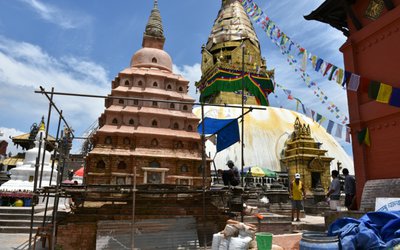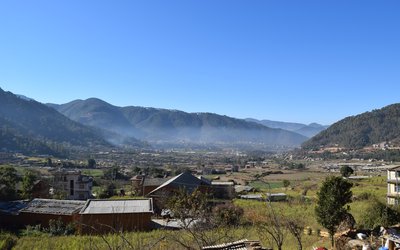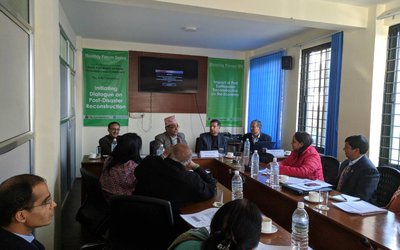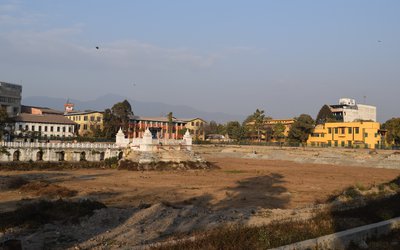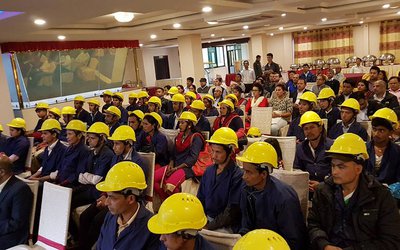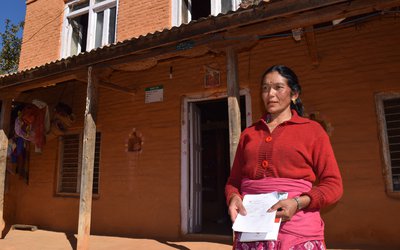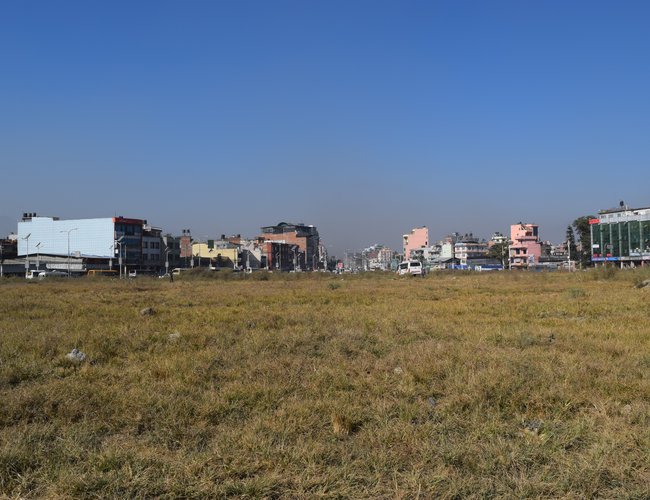
With many loopholes and weak governance at land reforms office, Nepal’s public lands are most vulnerable to misuse. If elected representatives, officials of land reforms office, landowners or land mafia join together, nothing is impossible in Nepal.
Everything can easily disappear in land reforms office, including valuable documents such as land compensation papers, land acquisition orders and other land documents. Once all the evidences disappear, anything can happen to the land.
With the recommendation of local levels, land reforms office can register the land in anyone’s name. What is required is to publish a notice in the government owned Gorkhapatra.
“Once somebody comes with the required documents, we have to register the land in the name of a person who claims it,” said Punya Bikram Paudel, spokesperson of Ministry of Land Reforms.
The case of Baluwatar land deal exposes one side of the story. Although a case is pending in Kathmandu District Land Office over the land ceiling, even an institution like Non-Residential Nepalese Association is permitted to construct its office building with the interim order from the Supreme Court.
According to the law, one cannot construct any building once there is a dispute in the land. Advocate Yubaraj Koirala, who filed the case in Kathmandu District Land Office on land ceiling of Baluwatar land, revealed that many documents of the land have disappeared from the government records. “Every document can be stolen from the land office.”
One can easily gauge the state of record keeping by the District Land Office in Kathmandu. Although the Commission for the Investigation of the Abuse of Authority maintains vigilance over the activities, there are reports of rampant corruption in the district land office.
“District Land Reforms and Management Office has a very good system to keep the records. Some files and documents have disappeared during the transfer of the office after the earthquake,” said an official on condition of anonymity.
Tinkune’s Land
Although it seems sudden, there are reasons to suspect. After spending almost Rs. 5 million, Kathmandu Metropolitan City had leveled the public land in Tinkune to build a temporary park before the local elections in May.
As part of the initiative to increase greenery in Kathmandu, KMC had planned to plant Bermuda grass and build walking tracks. People were supposed to go to the park for morning walk and also to spend free time there. KMC had also a plan to erect a huge national flag in the middle of the park.
However, the plan has changed following the election of representatives to KMC. Eshor Raj Poudel, executive officer, who took the initiative at KMC to complete the construction of the park, was transferred in a week after Bidhya Shunder Shakya took the command of KMC as the new mayor. Poudel was reportedly asked to stop all the activities just a day after newly elected leadership took the command.
KMC had planned to deploy staffers to clean the park. However, the entire proposed plan was ruined and the land was again left to park the buses and trucks.
As the price of land in Kathmandu is sky rocketing and Tinkune’s land prices are soaring, any deal on land is naturally a lust for elected representatives and officials.
The “green park” construction at Tinkune, a dream project of the Kathmandu Metropolitan City (KMC), has not yet materialized owing to the inability of the metropolis to manage compensation for the land owners.
The KMC had announced that it will transform the waste land into a park well before the 18th SAARC summit. Even the Ministry of Federal Affairs and Local Development had allocated Rs 10 million for the project.
Issue of Compensation
Although the government had acquired the land in 1976 promising to compensate the owners, the government reportedly paid the compensation at that time. However, the documents have been lost. The second process to provide the compensation started again in 2005 but could not be completed owing to disputes over the price of land.
As a result, the land remained unused and became a practice ground for driving institutes, playground for children and dumping site for locals. In the summer season, however, it is covered with bushes.
KMC officials said they provided over Rs 100 million in compensation to the owners of the 21 ropanis of land. We could not reach a deal with the owners of 8 ropanis of land and some locals are demanding compensation for the remaining 22 ropanis of land, which is a public property.
As the metropolis failed to reach a deal with land owners on compensation, it has handed over the responsibility of settling the dispute to the Kathmandu District Administration Office (DAO).
There are contradictory records on the compensation issue. It is reported that the process of paying compensation is getting delayed because owners of the land have been seeking a hefty compensation.
Almost ten months since the elections of the local level, the KMC is yet to take any initiative to settle the compensation issue with land owners and start to build the park. Given the present state of deteriorating governance system and elected representatives’ lust for money, nobody can be sure about the fate of the land.
- TANAHU HYDROPOWER PROEJCT: A Significant Achievement
- Apr 15, 2024
- AMBASSADOR HANAN GODAR: Sharing Pain With A Nepali Family
- Mar 30, 2024
- VISIT OF KfW AND EIB TO NEPAL : Mission Matters
- Mar 25, 2024
- NEPAL BRITAIN SOCIETY: Pratima Pande's Leadership
- Mar 24, 2024
- NEPAL ARMY DAY: Time To Recall Glory
- Mar 15, 2024

